 Director Adam Shankman was attracted to "The Wedding Planner" for several reasons. "The script reminded me of old movie classics starring Rosalind Russell and Cary Grant, or Katharine Hepburn and Spencer Tracy. I'm a huge fan of romantic comedy with dialogue that is witty and crackling," says Shankman. "It also has movie musical elements and several dance numbers in it. As a choreographer, I could envision how these factors could enhance the magic, the romance and the comedy."
Director Adam Shankman was attracted to "The Wedding Planner" for several reasons. "The script reminded me of old movie classics starring Rosalind Russell and Cary Grant, or Katharine Hepburn and Spencer Tracy. I'm a huge fan of romantic comedy with dialogue that is witty and crackling," says Shankman. "It also has movie musical elements and several dance numbers in it. As a choreographer, I could envision how these factors could enhance the magic, the romance and the comedy."
But most of all, Shankman warmed up to the overall theme of the story, which mixes both old-fashioned romance and modern attitudes. "It's destiny when two people from different worlds meet. On the surface, they shouldn't be together, but the subtext of the characters is inextricably linked. They need to come together. More specifically, this film is about risking your heart and not being afraid to go for it," says Shankman.
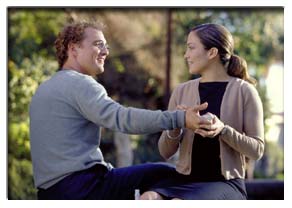 The idea for the film began to take shape when screenwriting partners Pamela Falk and Michael Ellis saw an ad in the Learning Annex catalog on How to Be a Wedding Planner. "We thought: what kind of person plans other people's weddings?" says Ellis. Taking the idea a step further, "We thought it would be a funny juxtaposition to have a wedding planner with a non-existent love life," says Ellis.
The idea for the film began to take shape when screenwriting partners Pamela Falk and Michael Ellis saw an ad in the Learning Annex catalog on How to Be a Wedding Planner. "We thought: what kind of person plans other people's weddings?" says Ellis. Taking the idea a step further, "We thought it would be a funny juxtaposition to have a wedding planner with a non-existent love life," says Ellis.
For their research, Falk and Ellis went to the Los Angeles Festival of Brides, a trade show for anything and anyone connected with weddings. "We met a lot of wedding planners there, set up meetings with them and then interviewed them to find out what they actually did and how they operated," says Falk.
"What we found out was that it's a world that's very far from romance and love. We had lunch with one wedding planner who told us that she didn't even believe in marriage. So we took that to the next level in the script, where Mary is not only unsentimental about the weddings she plans, but has them down to a science. She can actually tell how long a couple will stay together by the different choices they make for their wedding song or the color of the bridesmaids' dresses," says Falk.
 Producer Jennifer Gibgot responded to the material because she felt the story was timeless. "A lot of couples feel complacent and comfortable with each other. They're afraid to leave the relationship, so they take the next step because that's what's expected. 'The Wedding Planner' is about that, but it's also about getting married for the first time for the right reasons," explains Gibgot.
Producer Jennifer Gibgot responded to the material because she felt the story was timeless. "A lot of couples feel complacent and comfortable with each other. They're afraid to leave the relationship, so they take the next step because that's what's expected. 'The Wedding Planner' is about that, but it's also about getting married for the first time for the right reasons," explains Gibgot.
After falling for the script, producers Peter Abrams and Gibgot went about finding the right director for "The Wedding Planner." They wanted someone who could balance the film's musical and dance concerns with the story's classic romantic comedy style. Equally strong was their desire to give the film a stunning visual look.
 After interviewing dozens of people, they found the man of their dreams right under their noses - Adam Shankman. Abrams, who had previously worked with Shankman when he choreographed his film "She's All That (1999)," describes him as an obvious choice for several reasons. "There are two big dance numbers in the film, and that's Adam's strength; he's been the top movie choreographer for years. Also, 'The Wedding Planner' is really a throwback to the romantic comedies of the '30s and '40s, and that's very much Adam's sensibility. He knows how to make the comedy, romance, music and dance sparkle."
After interviewing dozens of people, they found the man of their dreams right under their noses - Adam Shankman. Abrams, who had previously worked with Shankman when he choreographed his film "She's All That (1999)," describes him as an obvious choice for several reasons. "There are two big dance numbers in the film, and that's Adam's strength; he's been the top movie choreographer for years. Also, 'The Wedding Planner' is really a throwback to the romantic comedies of the '30s and '40s, and that's very much Adam's sensibility. He knows how to make the comedy, romance, music and dance sparkle."
Gibgot, who is also Shankman's younger sister, agrees. "Adam has seen every single musical and classic romantic comedy ever made, so I brought him in to meet with the studio executives, like all the other directorial candidates. He pitched his take on the film, and they hired him right there in the room."
 After Shankman signed on, casting the role of Mary was the next task at hand. The director describes her as "a workaholic who has transferred all her feelings about love into her career. She's constantly immersed in what most couples think is the most romantic, important day of their lives. But for Mary, they're just exercises in physical beauty," he says.
After Shankman signed on, casting the role of Mary was the next task at hand. The director describes her as "a workaholic who has transferred all her feelings about love into her career. She's constantly immersed in what most couples think is the most romantic, important day of their lives. But for Mary, they're just exercises in physical beauty," he says.
Speaking of physical beauty, casting the lovely Jennifer Lopez as Mary was not an obvious choice for Shankman. "I thought she was too sexy for the role," he says. "I didn't think Jennifer would be someone a bride-to-be would want around her fiancée," he explains.
But Lopez got a hold of the script and met with Shankman. "She came to the restaurant and absolutely dazzled me," says the director. "She answered every question about who Mary was, beyond correctly. She bit into this project and wouldn't let go-her passion for it was so intense."
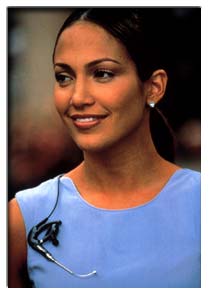 Explaining her interest in the part, Lopez says: "I was anxious to do a romantic comedy after starring in action films and heavy dramas. I know how goofy I am in real life so this film seemed like a great way to show that side of me. When I read the script, it had a little bit of that magic that the best romantic comedies have, that waiting-for-prince-charming type of fairy tale quality that I like in romantic comedies."
Explaining her interest in the part, Lopez says: "I was anxious to do a romantic comedy after starring in action films and heavy dramas. I know how goofy I am in real life so this film seemed like a great way to show that side of me. When I read the script, it had a little bit of that magic that the best romantic comedies have, that waiting-for-prince-charming type of fairy tale quality that I like in romantic comedies."
"The truth of the matter is," adds Shankman, "that at that time, Jennifer was very much like Mary."
Lopez concurs. "When I signed on to do the film, my life really mirrored Mary's. I was very focused on my career, and I put my love life on the back burner at that time. I could really relate to her. Mary definitely does believe in prince charming, it's just not that important to her right at the beginning of the story. She's focused on her career; she's very set in her life right then."
To prepare for her role, Lopez learned about what it takes to be a wedding planner. She discovered that wedding planning isn't just about flowers, photographers and happily ever after. It's a challenging balancing act between the many details involved in getting a couple, and everyone else involved, through the ceremony and off into their new life together.
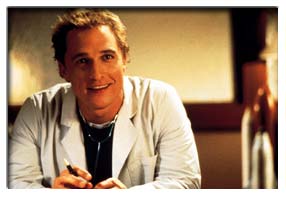 "To be a wedding planner, you have to be a therapist too," Lopez explains. "You're dealing with the biggest event in a lot of people's lives; their big night; their big show. Everybody wants to take part, and the bride and groom want it to be perfect. It's such a big step for so many people that it stirs up a lot of strong emotions."
"To be a wedding planner, you have to be a therapist too," Lopez explains. "You're dealing with the biggest event in a lot of people's lives; their big night; their big show. Everybody wants to take part, and the bride and groom want it to be perfect. It's such a big step for so many people that it stirs up a lot of strong emotions."
"What makes Mary so good at her job is that, first of all, she loves what she does," Lopez continues. "She's organized and meticulous, and it shows in her work. She's built herself a reputation, and she's very good at making people feel like everything is going to be OK."
Although Mary is a whiz at weddings, her dedication takes its toll on her personal life. But a chance meeting with a handsome doctor soon changes all that.
 Who makes a better prince charming than handsome, charming Matthew McConaughey to unsettle Mary and literally sweep her off her feet?
Who makes a better prince charming than handsome, charming Matthew McConaughey to unsettle Mary and literally sweep her off her feet?
As Dr. Steve Edison, McConaughey plays the loyal groom-to-be in the fateful wedding Mary is planning. Like Lopez, the actor also responded to the film because it offered him a different kind of character to play.
"This is one of the first characters I've played where I'm not heavily defined by my profession. I've been a lawyer, a cowboy, a theologian and a lieutenant in different films. But being a doctor in this film is really beside the point," he explains.
 Lopez explains the charm of McConaughey and his character. "He's a southern kind of gentleman, and that's so becoming. He's the kind of guy who, when he looks at you, makes you giggle like a little girl."
Lopez explains the charm of McConaughey and his character. "He's a southern kind of gentleman, and that's so becoming. He's the kind of guy who, when he looks at you, makes you giggle like a little girl."
McConaughey has his own take on Steve and his relationship to Mary. "He's not too complicated a guy. He's a lover, he's a doctor, so he's a caregiver."
 Mary's reaction to Mr. Right is in the tradition of many films from Hollywood's golden age. "They have this kind of chance meeting," Lopez says. "It's a big accident, and then they get thrown together for the rest of the day. She definitely feels something right away, and it's something she hasn't felt in a long time. It takes her by surprise. She doesn't really know what to make of it, but it's exciting."
Mary's reaction to Mr. Right is in the tradition of many films from Hollywood's golden age. "They have this kind of chance meeting," Lopez says. "It's a big accident, and then they get thrown together for the rest of the day. She definitely feels something right away, and it's something she hasn't felt in a long time. It takes her by surprise. She doesn't really know what to make of it, but it's exciting."
According to McConaughey, "Mary and Steve, through a bunch of different circumstances, are forced to be in each other's company because she's obviously planning the wedding. A relationship cultivates from there, and they sort of grow on each other. This story is a fable, a love story between Mary and Steve. That's the fun of it. It's a classic comedy."
Rediscovering love, and seeing and feeling it in a new way, is something that Steve, as well as Mary, must experience. "Steve, as a character, has many of his own issues with love and marriage that need to be worked out through the story," McConaughey says. "Meeting Mary sends a shock through his life that helps wake up his mind and his heart. She makes Steve realize what's going on, what he wants out of life, what's possible."
 For Shankman, the pairing of Lopez and McConaughey resulted in an unexpected alchemy. "In real life and in the film, Jennifer and Matthew come from different sides of the world-she's the Bronx city girl, and he's the Texas cowboy. Their characters in the film kind of mirror this-Mary's the sophisticated event planner, letting nothing get in her way, and Steve's a laid back pediatrician going with the flow. Yet their differences compliment each other-Mary needs to relax and enjoy life a little more, and Steve needs be more focused and serious about what's important to him. So they complete each other, besides looking so right together."
For Shankman, the pairing of Lopez and McConaughey resulted in an unexpected alchemy. "In real life and in the film, Jennifer and Matthew come from different sides of the world-she's the Bronx city girl, and he's the Texas cowboy. Their characters in the film kind of mirror this-Mary's the sophisticated event planner, letting nothing get in her way, and Steve's a laid back pediatrician going with the flow. Yet their differences compliment each other-Mary needs to relax and enjoy life a little more, and Steve needs be more focused and serious about what's important to him. So they complete each other, besides looking so right together."
Shankman next cast beautiful blond Bridgette Wilson to play Steve's bride-to-be, internet mogul Fran Donolly-the perfect foil to Mary.
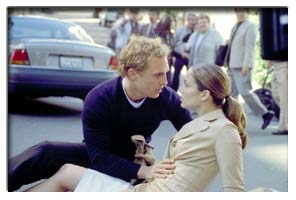 Wilson describes Fran as "a high-powered, successful, very direct woman who knows what she wants. Fran's been with Steve for a long time, and I think she probably decided it was time to get married so that's why she doing it."
Wilson describes Fran as "a high-powered, successful, very direct woman who knows what she wants. Fran's been with Steve for a long time, and I think she probably decided it was time to get married so that's why she doing it."
Like Mary and Steve, Fran must learn that love is something that it is uncontrollable and that doesn't always respond to logic or plans. "Fran and Steve have a great relationship, and they really like each other. They're good friends," Wilson explains. "However, the story sort of proves that even though you're really good friends, it doesn't mean you're necessarily right to marry one another. That's what Fran and Steve learn, that although they've been together for so long, they aren't meant to get married."
To square off the film's romantic quartet, Shankman cast good-looking, Calvin Klein model-turned actor Justin Chambers to play Massimo, the young man from the old country whom Mary's Italian immigrant father has arranged for her to marry.
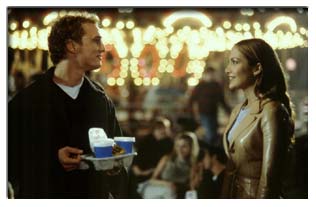 Chambers describes Massimo this way: "Massimo loves life. He loves people. He is not judgmental. He's passionate and creative and maybe a little needy, but he's fun. He's a fun person."
Chambers describes Massimo this way: "Massimo loves life. He loves people. He is not judgmental. He's passionate and creative and maybe a little needy, but he's fun. He's a fun person."
"Massimo is kind of a surprise for Mary at the beginning of the story," Lopez says of Chambers' character. "She kind of takes offense to the idea that her father is trying to set her up. But Massimo is so gung-ho about it because he's from the old country and he's okay with it. He provides a lot of comic relief in the movie, and Justin brings a lot to it. He's one of the most enjoyable characters in the movie."
 Shankman also feels that Chambers brought a lot to the character. "Justin plays Massimo as a kooky wild card. He conveys warmth, depth and a you-never-know-what's-going-to-happen-next kind of feeling in every scene he's in."
Shankman also feels that Chambers brought a lot to the character. "Justin plays Massimo as a kooky wild card. He conveys warmth, depth and a you-never-know-what's-going-to-happen-next kind of feeling in every scene he's in."
Shankman feels that these four main characters embody different elements of romantic love. "Mary is the cynic-she's been hurt before so she's not going to leave herself open to that again. Steve represents loyalty-he's made a commitment, and he's going to follow through on it. Fran is a modern working woman with a plan, thinking with her head more than her heart. Massimo symbolizes vulnerable, open love."
None of the characters examine the consequences of embodying these qualities, adds Shankman. "Mary's cynicism keeps her from trusting people and risking things. Steve's loyal to a fault; he's gotten himself into a marriage that is not necessarily the right one for him. Objectively, Fran feels Steve is the right guy at the right time of her life, but she's really cheating herself out of actually falling in love with somebody because she's used to this guy. Massimo is so guileless that he's wrapped up in a one-sided love affair. So it's really sweet in a way because there are no villains in this story except everybody's foibles."
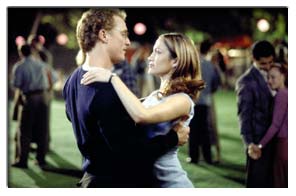 A bevy of fine actors rounds out the film's supporting cast. Veteran actor Alex Rocco portrays Salvatore, Mary's caring, protective Italian father. Judy Evans Greer plays Mary's screwball wedding planning assistant. Kevin Pollak is Dr. John Dojny, Steve's oversexed buddy and colleague. Charles Kimbrough and Joanna Gleason play Fran's pretentious yet endearing parents, Kitty and Jack Donolly.
A bevy of fine actors rounds out the film's supporting cast. Veteran actor Alex Rocco portrays Salvatore, Mary's caring, protective Italian father. Judy Evans Greer plays Mary's screwball wedding planning assistant. Kevin Pollak is Dr. John Dojny, Steve's oversexed buddy and colleague. Charles Kimbrough and Joanna Gleason play Fran's pretentious yet endearing parents, Kitty and Jack Donolly.
For the first few months, production on "The Wedding Planner" was based in Los Angeles. The production then moved on to three weeks of filming in San Francisco for scenes that could be shot nowhere else but in the real jewel of the California Gold Coast.
 It was Shankman's idea to change the original location in the script from New York to San Francisco. "It's always struck me as a romantic, beautiful city, and I wanted to make this film a kind of Valentine to it. Also, with its upper crust attitude, it would be a perfect location for a savvy wedding planner to exploit all the new-moneyed, techno-millionaires who want to be accepted into old-money society. This is what Fran Donolly and her parents exemplify."
It was Shankman's idea to change the original location in the script from New York to San Francisco. "It's always struck me as a romantic, beautiful city, and I wanted to make this film a kind of Valentine to it. Also, with its upper crust attitude, it would be a perfect location for a savvy wedding planner to exploit all the new-moneyed, techno-millionaires who want to be accepted into old-money society. This is what Fran Donolly and her parents exemplify."
Shankman and cinematographer Julio Macat shot this love letter to the city at such locations as lush Golden Gate Park, where the Donolly wedding takes place; the magnificent Filoli House and Gardens just outside the city, which doubled for an upscale Napa Inn; the opulent, newly renovated City Hall, Victorian Park on San Francisco Bay, Grace Cathedral, and the distinctive Nob Hill neighborhood.
"My big edict to the locations scout was that I didn't want to see any cable car wires or power lines. Also, I didn't want to emphasize the city's hills. I wanted to take the clichés away from the city and make it look more European," says Shankman. "That way, the romance of the city would shine through."
 "My goal for the look of the movie was to infuse it with the old-fashioned glamour of some of my favorite films, like 'His Girl Friday (1996),' 'Bringing up Baby (1938)' and 'Roman Holiday (1953),'" continues Shankman. "These films were populated with truly beautiful people who bantered with smart dialogue, who wore beautiful clothes and lived in beautiful settings. For audiences, it was pure entertainment. It lifted you out of your seat a little bit, out of your life a little bit. It became another world."
"My goal for the look of the movie was to infuse it with the old-fashioned glamour of some of my favorite films, like 'His Girl Friday (1996),' 'Bringing up Baby (1938)' and 'Roman Holiday (1953),'" continues Shankman. "These films were populated with truly beautiful people who bantered with smart dialogue, who wore beautiful clothes and lived in beautiful settings. For audiences, it was pure entertainment. It lifted you out of your seat a little bit, out of your life a little bit. It became another world."
The dance scenes in "The Wedding Planner" most exemplify director/choreographer Shankman's tip of the hat to the great musical films. Screenwriters Falk and Ellis are huge dance fans as well. "We both love to dance and include such numbers in almost all our screenwriting. We think of it as the ultimate symbol of romance, because it's the closest that two people can come without kissing or actual sex. It's foreplay," says Ellis.
 "Dancing is a great symbol of a connection without saying anything," explains Falk. "So in 'The Wedding Planner,' we tried very hard to make the dance integral to what the characters were feeling emotionally at that point in the story," she says.
"Dancing is a great symbol of a connection without saying anything," explains Falk. "So in 'The Wedding Planner,' we tried very hard to make the dance integral to what the characters were feeling emotionally at that point in the story," she says.
One of the key scenes in the film is the dance number in the park where Mary and Steve have an incredible first date. Screenwriters Falk and Ellis based this scene on what they had observed at New York City's Bryant Park, which is just behind the New York Public Library.
"In the summer, at night, they show old movies against the library wall," says Falk. "I thought, wouldn't it be amazing if they showed old musicals, and during the musical numbers everyone got up and danced along."
Shankman took that enchanting thought from the page to the stage, so to speak. "I think I was hired to direct this movie based on my take of this scene," states the director, who also choreographed the film."
"He did great," says Lopez of Shankman's dances and direction. "I was so impressed with him because I know the night before we did our big dance, I knew how hard it was and how hard it was going to be to shoot and get the emotion of what we were both feeling and get the steps. I know it was difficult for him too and me being a dancer and me being worried about it, I just couldn't even imagine. He just did it so incredibly well, I was so impressed with him. This was one of the hardest scenes I've ever shot and I've done action scenes and all kinds of weird things in movies, but this was definitely very, very tough to pull off, so I was very impressed with him."
The lovely grounds of the Los Angeles Veterans Administration served as the generic San Francisco Park for the scene. Shankman and production designer Bob Ziembicki pulled out all the stops to make this the most romantic park ever. They dressed it with glowing lanterns, a lighted Ferris Wheel, and a colorful carousel, just for starters.
Shankman chose the obscure film "Two Tickets to Broadway (1951)," starring Tony Martin and Janet Leigh, to show on the park screen. "Most people would have gone for Fred Astaire and Ginger Rogers," says Shankman, "but I wanted something a little unexpected here. Also, the film was shot in Technicolor so I knew it was going to look really beautiful in the background."
For this fantasy dance scene, Shankman called upon 40 dancers with whom he'd danced when he was a dancer and then choreographed in other films. With his assistant choreographer, Anne Fletcher, Shankman choreographed and rehearsed the scene with the dancers over several weekends prior to filming it.
The song that he used for the dance number from the film is called "The Closer You Are," by Jule Styne. "It's the falling-in-love song in the film, and it bursts into a waltz. To me, the waltz is one of the most romantic partner dances, because two people are holding each other in their arms, and sweeping each other around and around. It feels perfect for the sentiment and emotion of the scene, and it pushes Mary and Steve closer together," says Shankman.
Matthew McConaughey agrees. "To me, the dance scenes in the film are really the love-making scenes, so to speak. When Mary and Steve are dancing together the world evaporates around them. They're in their own intimate world."
The next dance number was a tango. Falk, Ellis and Shankman all thought this was the perfect dance for the scene in which Mary finds out Steve is engaged. "It's a dance of fire and passion. Although they're verbally resisting each other at the time, it's contrapuntal to how well they fit together," explains Shankman.
Shankman was very impressed with Lopez's dancing talent. "She's as good a dancer as I've ever worked with. She's amazing," he says. But Lopez found this scene very challenging. "Although I've done a lot of action films, this was one of the toughest scenes I've ever done because it was an important scene to the storyline, with a lot of dialogue, and a lot of beats to contend with," she says.
Even so, Lopez and Shankman had an immediate rapport through dance. To McConaughey, this dancing stuff was a foreign language.
McConaughey rehearsed for two months to get the tango scene down. Not only did he have to learn to tango like Rudolph Valentino, but he and Lopez had to combine it with two pages of heated repartee.
"Matthew was so dedicated to getting this right. In between his other scenes, he would go with my assistant, Anne, into a rehearsal hall, and just work hour after hour. Both Jennifer and he really nailed it," says Shankman.
McConaughey agrees. "I must admit I was pretty anxious about it, but once I learned it, it was quite a treat. In fact, that was one of the attractions of doing 'The Wedding Planner.' I've always wanted to dance in a film."
Costume designer Pamela Withers was brought on to give the film's characters that "classic beautiful look" that Shankman wanted in "The Wedding Planner."
"Adam and I saw Mary's style as very sophisticated, conservative and timeless, like such everlasting icons as Audrey Hepburn, Grace Kelly or Jacqueline Kennedy. Mary also seemed like a woman who saved her money and invested it in a few good designer pieces," says Withers. "So I dressed her in such things as a classic blue Armani cotton sheath, a tan leather Prada coat, and an Emporio Armani two-piece top and skirt with a little cardigan. The audience may not be used to seeing Jennifer Lopez like this, but she looks stunning."
"Mary starts out dressing very business-like when the film begins," observes Withers, "but her wardrobe becomes a touch sexier, lighter and more romantic as the film goes on."
For McConaughey, Withers chose comfortable upscale things, all of which were slim and trim-lined for him. "We wanted things to hug his chest. He's got great pecs," she reveals.
Color and style were very important elements for the two leads. "For instance, in the scene where Mary and Steve meet and he rescues her, she's in bright blue and tan, and he's in navy and chocolate, so they compliment each other," says Withers.
"Conversely, when they're dancing the tango together, I put Mary in a red dress to symbolize anger and passion, and Steve wears a maroon shirt, which clashes just a little with her dress. Subconsciously, it jars you just a touch and shows the disconnectedness at that time in their relationship."
Mary plans four weddings in the film, and Withers had a lot of fun choosing four distinct wedding dresses for these scenes. Two Vera Wang gowns bracket the film. "The bride in the church wedding that opens the movie is wearing a very traditional strapless dress with rhinestones and silver beading across the bodice. She also wears a platinum bow that picks up the silver beading," describes Withers. "Fran Donolly wears the other Vera Wang, at the end of the film. This was our most formal, most extravagant gown because her wedding is the biggest and the best. The dress has a lace bodice covered with diamond cut sequins to give her a little sparkle, spaghetti straps and a full silk organza under-skirt covered by layers of lace."
"For the Moroccan wedding, the bride wears a lovely beaded, bias-cut Badgley Mishka slip dress. And for the Greek wedding, the bride wears a satin, ballerina length Werk Statt dress."
The four weddings themselves were given more authenticity and distinction by high-end Los Angeles wedding planner Rob Smith from Laurels, one of the top floral designers in the city. He, along with production designer Bob Ziembicki and set decorator Barbara Munch, created incredible works of art for each affair.
For instance, the church wedding, which was filmed at Pasadena's stained glass Westminster Presbyterian Church, was adorned with blossoming cherry trees among its pews. The Greek wedding, filmed at the historical Wilshire Ebell Theater in Los Angeles, was accentuated with olive and orange trees, Greek food and plate throwing. The Moroccan wedding was filmed at The Athenaeum at Caltech, where guests felt they had arrived in Fez, with cushioned seating and Moroccan touches everywhere. Finally, the Donolly wedding was filmed in glorious Golden Gate Park where glistening globe lanterns hung from sycamore trees and a half-domed stage framed the opulent, sumptuous event.
Other important Los Angeles locales in the film were the glorious Huntington Gardens in Pasadena, which stood in for Golden Gate Park's Japanese Gardens, and the verdant Ventura Farms, where the horseback riding scene takes place.
Shankman definitely achieved his aesthetic vision in the film, but he also hopes to leave the audience with a message: "In a relationship, it's important to take care of yourself and be honest with your partner. Keep the lines of communication open because things can get messed up when you don't."
"I also think that women will walk away thinking that they're insane if they don't use a wedding planner!" the director adds.
Jennifer Lopez couldn't agree more. "I absolutely would not get married without one," she concludes.





